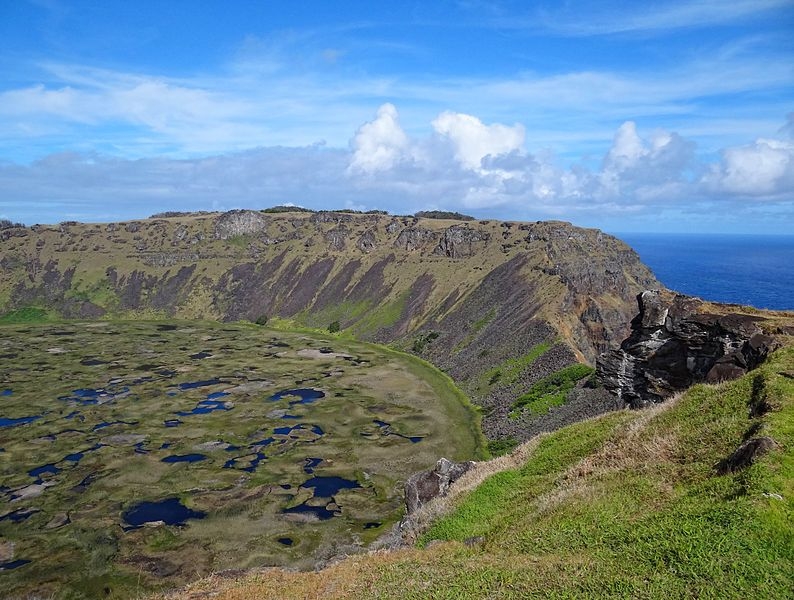Basic ecotouristic information on Rapa Nui National Park (Chile) - localization, access, characteristic, fauna and flora, possible activities.
 Localization
Localization
Easter Island, southeastern part of Pacific Ocean 3,700 km west of Chilean coast and about 2,200 km east of Pitcairn Island (the nearest human habitat).
Access
By plane, only with LAN, from Santiago, 7 flights a week. The ships of the Chilean navy go there once a month.
Characteristic
71,3 km2; Geographically isolated, the island forms the eastern geographic and cultural boundary of Polynesia. The island of volcanic origin with three exctinct volcanoes and two large and more than 70 smaller craters. The park is triangular in shape and has a length of 23 km and a width of 11 km. Its elevation varies from sea level to 300 m. The park is divided into seven sections. There are no trees in the park area as the consequence of human activities (deforestation). There are only three small crater lakes, on the island there is no surface running water. Typical ecosystems: subtropical steppes, crater lake, volcanic biotopes, sea and coastal biotopes.
Fauna + Flora
Species List - See the Attachment Below
(Species list may not be complete)
Possible activities
Trekking, horseback riding, scuba-diving, surfing, sea kayak, photography, fishing
Note
Park is accessible all the year round.
The park is listed as a World Heritage Site of UNESCO. Its fame and World Heritage status arise from the 887 extant stone statues known by the name "moai", whose creation is attributed to the early Rapa Nui people who inhabited the island around 300 AD.
The park is more important from the historical and cultural points of view.
Rapa Nui is considered one of the most isolated inhabited places in the world.
Contact us
Do you like any information on the national park mentioned above or would you like to join us while travelling there? Please, fill up the attached form